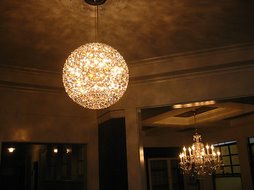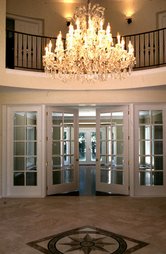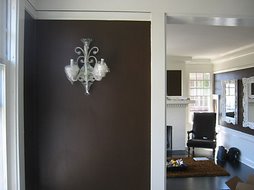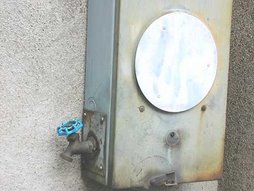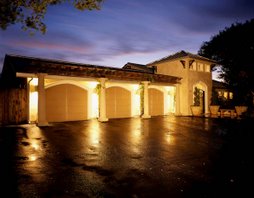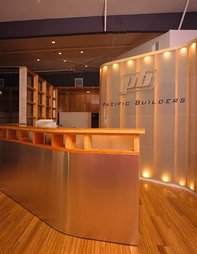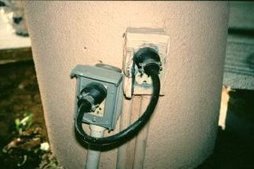


Professional Work! Reliable service! On Call in Sonoma County and Marin County
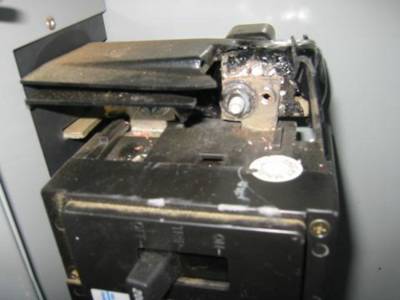
For lighting objects on a wall, the wall itself, or any vertical surface, position the track and the fixtures as shown at right.
(Example: The distance from the ceiling to the center of the painting is 4 ft. Mount the track on the ceiling 27" away from the wall.) |
|
When installed correctly knob and tube wiring was, in some ways, superior to current wiring practices. Unfortunately, this system is rarely intact after 80 or so years of use. Things that happen well after the original installation can cause major problems. For this reason, knob and tube will normally need to be replaced, especially if the insurance company requires it!
Basically there are two ways to replace knob and tube wiring. The first method is to waste no time trying to preserve walls or ceilings and run the wires in the fastest and shortest route. After the electrical wiring is installed and inspected, the damage needs to be repaired. The cost for this type of electrical work is lower if it's completed faster. Although you will save on electrical costs, you need to factor in the cost of repairing and repainting the walls and ceilings. Just remember there will also be a lot of inconvenience due to dust and dirt. The second method is much slower and cleaner and involves looking for ways to fish the wiring through the walls and ceilings. Because this process is so time-consuming you will pay more for the electrician's time. The up side is that you'll have little or no damage and only minor disruptions to your home.
The other question is the size of the main at the meter. Old K&T installations were typically undersized by today's standards.
Our advice about improving the safety and reliability of knob and tube electrical wiring
